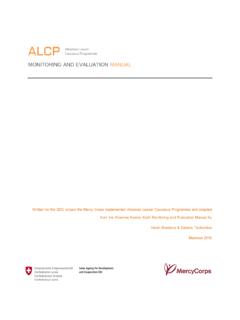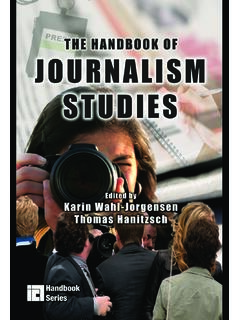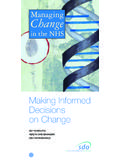Transcription of EuropeAid/127604/D/SER/HR - Enterprise Development
1 Report on the Appropriate Legal Structure of Croatian Clusters Support to Cluster Development Contract No. IPA2007/HR/16 IPO/001-020601 Identification No: EuropeAid/127604/D/SER/HR Prepared for the Ministry of Economy, Labour and Entrepreneurship (MELE), and the Central Finance and Contracting Agency (CFCA), Government of the Republic of Croatia December 2011 Report on the Appropriate Legal Structure of Croatian Clusters Support to Cluster Development Contract No. IPA2007/HR/16 IPO/001-020601 Identification No: EuropeAid/127604/D/SER/HR Prepared for the Ministry of Economy, Labour and Entrepreneurship (MELE), and the Central Finance and Contracting Agency (CFCA), Government of the Republic of Croatia December 2011 Guidelines for Cluster Development A handbook for Practitioners January, 2012 updated June 2013 Support to Cluster Development in Croatia: Cluster Development handbook _____ 2 Table of Contents 3 Introduction.
2 4 Chapter ONE: What are clusters and how do they work? .. 9 Benefits and challenges of clustering .. 9 Types of clusters .. 13 How clusters work .. 15 Cluster structure member types .. 16 Chapter TWO: The Role of Government in Building Clusters .. 21 Chapter 2A: Government Role in Cluster Creation .. 21 Chapter 2B: Specific Steps for the Government in Croatia .. 29 Chapter THREE: Identification of the Preferred Organizational and Legal Model for the Formation of Clusters .. 34 Legal Model for a Cluster .. 34 Cluster Management Organisation .. 37 Chapter FOUR: Top-down and Bottom-up Approaches to Building Clusters .. 41 Chapter 4A: Guidelines for Top-Down Approach to Building Clusters .. 42 Chapter 4B: Guidelines for Bottom-Up Approaches to Building Clusters.
3 51 Chapter FIVE: Transitioning your cluster from good to great 20 best practice steps .. 68 Chapter SIX: Criteria for Forming Regional Clusters .. 80 Appendix 1: The Strategic Action Process ( SAP) MAP for creation of three Pilot Competitiveness Clusters in Croatia Support to Cluster Development in Croatia: Cluster Development handbook _____ 3 Abbreviations CoE Chambers of Economy EDA Economic Development Agency EU European Union FDI Foreign Direct Investment IMC Integrated Marketing Communications LLC Limited Liability Company MELE Former Ministry of Economy, Labour and Entrepreneurship of Croatia MoE Ministry of Economy MoEC Ministry of Entrepreneurship and Crafts OECD Organisation for Economic Cooperation and Development PESTLE Political, Economic, Social, Technological, Legal, Environmental RDA Regional Development Agency SME Small Medium Enterprise SWOT Strengths, Weaknesses, Opportunities, Threats ToR Terms of Reference VAT Value Added Tax Support to Cluster Development in Croatia.
4 Cluster Development handbook _____ 4 Introduction This document was first delivered in January 2012. It was updated at project end, June 2013, to reflect structural changes that occurred within Ministries which materially affected responsibility areas, beneficiary status, and project reporting lines. It has also been updated to reflect and take account of the experience and the learning of the Support to Cluster Development project in the process of establishing the three Pilot Competitiveness Clusters in the period February 2012 to June 2013 This handbook is an output from the EU funded project: Support to Cluster Development in Croatia . It was prepared in response to a request from the Ministry of Economy, Labour and Entrepreneurship of Croatia (MELE).
5 It is intended for use as a guideline for MELE in their efforts to foster competitive commercial enterprises by developing and supporting cluster initiatives. It is further available for use by economic Development agencies who might wish to start up a cluster (the so-called top-down approach) or by private sector players who might wish to create a cluster or get involved in cluster management or leadership roles (the so-called bottom-up approach). Update note June 2013: In February 2012 there was a change of Government in Croatia and with it came a change in organization and structures of Ministries, project beneficiaries, project reporting lines and personnel. MELE was divided into three separate Ministries which included the Ministry of Economy and the Ministry for Entrepreneurship and Crafts.
6 Responsibility for the overall project was transferred to the Ministry of Entrepreneurship and Crafts. However, within that overall responsibility MoE retained responsibility for Components 1 and 2 while the MoEC took responsibility for Component 3 and 4. A considerable amount of work has been done by various international and national organizations worldwide in developing clusters and the way they did it and the lessons learned have been documented in various reports, policy papers and case studies all of which are available in the public domain. The information contained in this handbook was informed by a review and analysis of these materials. Hence, it offers a summary of conceptual frameworks for clusters and clustering, it outlines key approaches and instruments that can be used when building a cluster and provides best practice examples that can be adapted to the Croatian environment and replicated, where appropriate, in the Croatian market.
7 The primary focus of the experience review was on the practical application of the advice and guidance contained in the literature , the theory of cluster formation is discussed only to provide a context for and an understanding of the concept and its underpinning strategies. The aim of the handbook is to enable the reader to apply the Support to Cluster Development in Croatia: Cluster Development handbook _____ 5 learning without or with limited external help. The handbook is not meant to be exhaustive, neither are the instruments that are outlined definitive. Where information and analysis concerns Croatia, the author benefited from surveying and from face-to- face dialogue / interviews with local stakeholders from Regional Development Agencies to existing cluster managers to cluster participants.
8 Other Croatian market data was obtained through desk research. The handbook consists of six chapters each of which focuses on a particular issue or segment of cluster formation and Development . Where appropriate the contents o of certain chapters has been updated to reflect changed circumstances. Chapter Content Chapter One Defines clustering and how clusters function. It gives an overview of the key benefits and disadvantages of the clustering approach. Chapter Two Introduces the role of the public sector and specifically the government, in enabling the creation of clusters and their role in the process. It also provides a list of specific actions that the Croatian government could / should take to create an environment conducive to cluster creation and Development and which would contribute to wider regional and overall country competitiveness.
9 Updated June 2013 Chapter Three Outlines legal aspects in the creation and Development of clusters. It provides information about the different legal forms and entities that can / should be considered when forming a cluster. Chapter Four Details two approaches to cluster building top-down and bottom-up, providing specific action steps for both approaches. Updated June 2013 with reference to and explanation of a hybrid third-way ( ) combination of top-down / bottom up methodology, piloted by the Support to Cluster Development project (the Project). Support to Cluster Development in Croatia: Cluster Development handbook _____ 6 The concept of clustering referred to in this handbook means local concentrations of horizontally or vertically linked companies which specialise in related lines of business together with supporting organisations.
10 The definition as to what exactly constitutes a cluster tends to vary greatly. Concepts such as industrial zones, local business associations and regional clusters of innovation are used interchangeably and are commonly referred to as clusters for the sake of simplification and sometimes as a marketing tool. Even though these concepts highlight or emphasise slightly different cluster aspects, their main theoretical building blocks tend to overlap. The term cluster was first coined by Michael Porter when he used it in his seminal work The Competitive Advantage of Nations to explain the concept of economic competitiveness and what it stands for. A consequence of the system of [diamond] determinants is that a nation s competitive industries are not spread evenly through the economy but are connected in what I term a cluster consisting of industries related by links of various kinds (Porter, 1990 ).













